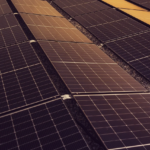
When enhancing your property’s aesthetics, security, and privacy, wooden fencing stands out as a timeless and versatile option. However, selecting the right wooden fence involves more than just picking the most visually appealing design. Factors such as durability, maintenance requirements, and suitability to your specific needs play crucial roles. Here’s a comprehensive guide to help you choose the perfect wooden fencing for your property.
Assess Your Needs and Preferences
Before exploring the myriad of wooden fencing options, evaluate your needs and preferences. Are you prioritizing privacy, security, or aesthetics? Do you have specific design preferences or architectural requirements? Understanding your priorities will streamline the selection process and ensure your chosen fence meets your expectations.
Consider Durability and Maintenance
According to Leicester fencing contractors and wooden fence experts such as RTC Fencing, wooden fences come in various wood types, each with its own durability and maintenance requirements. Cedar and redwood are popular choices due to their natural resistance to rot and insects, making them ideal for humid climates. Pressure-treated pine offers affordability and durability, albeit requiring regular maintenance to prevent rotting.
Explore Different Styles
From classic picket fences to modern horizontal slat designs, wooden fences come in various styles to complement any architectural theme. Consider factors such as the desired level of privacy, aesthetic appeal, and compatibility with your property’s style when exploring different fence designs.
Evaluate Installation and Budget
Wooden fencing costs vary depending on wood type, fence style, and installation complexity. While opting for high-quality materials and intricate designs can enhance your property’s curb appeal, balancing aesthetics with budget considerations is essential. Additionally, factor in installation costs and timeframes when planning your fencing project.
Prioritize Privacy and Security
If privacy and security are top priorities, opt for taller fence designs with minimal gaps between boards. Board-on-board or stockade fences provide maximum privacy by overlapping vertical boards, while solid panel fences offer enhanced security by obstructing visibility from outside.
Factor in Climate and Environmental Conditions
Climate and environmental factors such as sunlight exposure, humidity, and wind patterns can impact your wooden fence’s longevity and maintenance requirements. Choose wood species and finishes that are suitable for your local climate to ensure durability and minimize maintenance efforts over time.
Customize with Accessories
Enhance the functionality and aesthetics of your wooden fence with custom accessories such as gates, lattice panels, and decorative post caps. These additions add visual interest and serve practical purposes such as allowing airflow, enhancing security, and providing support for climbing plants.
Prioritize Sustainability
Select sustainably-sourced wood products certified by the Forest Stewardship Council and other organizations to minimize your environmental impact and support responsible forestry practices. Additionally, consider eco-friendly finishes and treatments that protect your fence while minimizing environmental harm.
Maintenance and Longevity
Regular maintenance is essential to prolonging the life of your wooden fence and preserving its beauty. Schedule periodic inspections for signs of damage or wear and perform routine tasks such as cleaning, sealing, and staining to protect against moisture and UV damage.
Choosing the right wooden fencing involves careful consideration of various factors, including durability, style, budget, and environmental impact. By assessing your needs, exploring different options, and prioritizing quality and sustainability, you can select a wooden fence that not only enhances your property’s aesthetics but also meets your functional requirements for years.
Image attributed to Pixabay.com



